
Transit Briefs: Amtrak, Brightline, CDOT, HART, LACMTA, SRPRA
Written by Marybeth Luczak, Executive Editor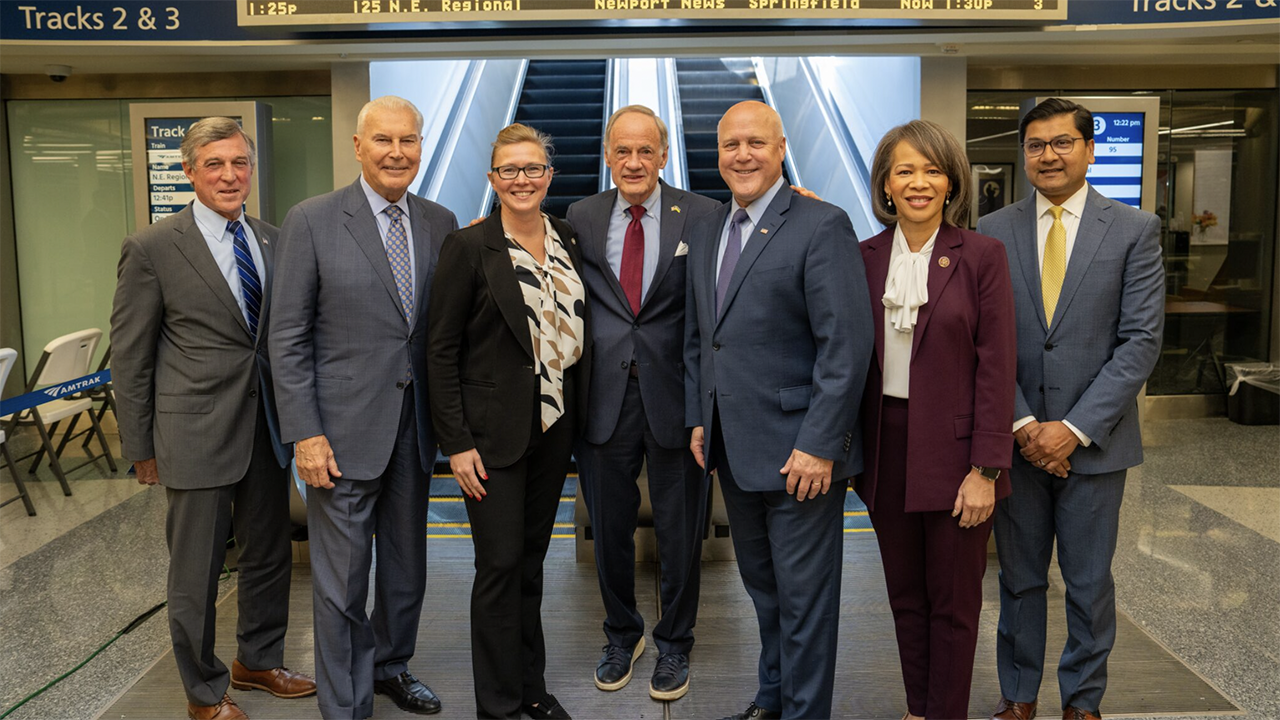
Amtrak this month celebrated completing accessibility improvements at Joseph R. Biden, Jr. Railroad Station in Wilmington, Del. Pictured, from left to right: Delaware Gov. John Carney, Wilmington Mayor Mike Purzycki, Amtrak EVP Laura Mason, U.S. Sen. Tom Carper (D-Del.), White House Senior Advisor Mitch Landrieu, U.S. Rep. Lisa Blunt Rochester (D-Del.), and FRA Administrator Amit Bose.
Amtrak completes Wilmington, Del., station renovations. Also, Brightline releases Miami-to-Orlando, Fla., ridership data; Colorado Department of Transportation (CDOT) is exploring northwest passenger rail service; the Federal Transit Administration (FTA) targets late 2023 to sign a new Full Funding Grant Agreement with Honolulu Authority for Rapid Transportation (HART); Los Angeles County Metropolitan Transportation Authority’s (LACMTA) Ambassador Program may become permanent; and Schuylkill River Passenger Rail Authority (SRPRA) in Pennsylvania renews its contract with consultancy Transportation for America.
Amtrak
Amtrak on Oct. 23 reported completing an $11.6 million project to fully repair, modernize and improve accessibility at the Joseph R. Biden, Jr. Railroad Station in Wilmington, Del. Among the major updates: the addition of two new escalators and interior stairs. Southeastern Pennsylvania Transportation Authority commuter rail and Delaware Transit Corporation (DART First State) buses also serve the station.
In fiscal year 2023, Amtrak provided service to more than 600,000 riders at Wilmington Station, which is ranked as the 20th busiest station on the Amtrak network. Originally built in 1908 and designed by architects Frank Furness and Allen Evans, it was rededicated as the Joseph R. Biden Jr. Railroad Station in spring 2011 after undergoing a restoration.
Additional repair and improvement work is planned for the station and adjacent rail beds over the coming years, according to “America’s Railroad,” which noted that the Wilmington project aligns with other station upgrades on the Northeast Corridor, including boarding platform improvements nearing completion in Washington, D.C., and Baltimore.
“The Wilmington Station is an important transportation hub on the Northeast Corridor and this $11.6 million project is a critical investment in the station,” Amtrak Executive Vice President, Capital Delivery Laura Mason said. “Amtrak is grateful for the Delaware Federal Delegation’s continued support in funding Department of Transportation grant programs, support of the IIJA [Infrastructure Investment and Jobs Act] and continued partnership.”
Since 2011, Amtrak has invested nearly $800 million in accessibility upgrades and improvement projects at 119 stations across the National Network that it said will “ensure a safe, efficient, and comfortable travel experience for customers with disabilities.” The improvements include repairs and upgrades to platforms, ramps, and sidewalks, and renovations to entranceways and restrooms, with 20 stations brought into ADA compliance in fiscal year 2023. Another 35 stations are targeted for completion in fiscal year 2024, Amtrak said, at a forecasted investment of $195 million.
Amtrak’s program is advancing 143 station designs and 39 station construction projects and the railroad said it is working toward 100% completion by 2029.
Earlier this month, Amtrak completed accessibility projects at the Del Rio, Tex., and Charleston, W.Va., stations. Last month, it completed a $1.4 million station-accessibility upgrade project in Jefferson City, Mo.
Brightline
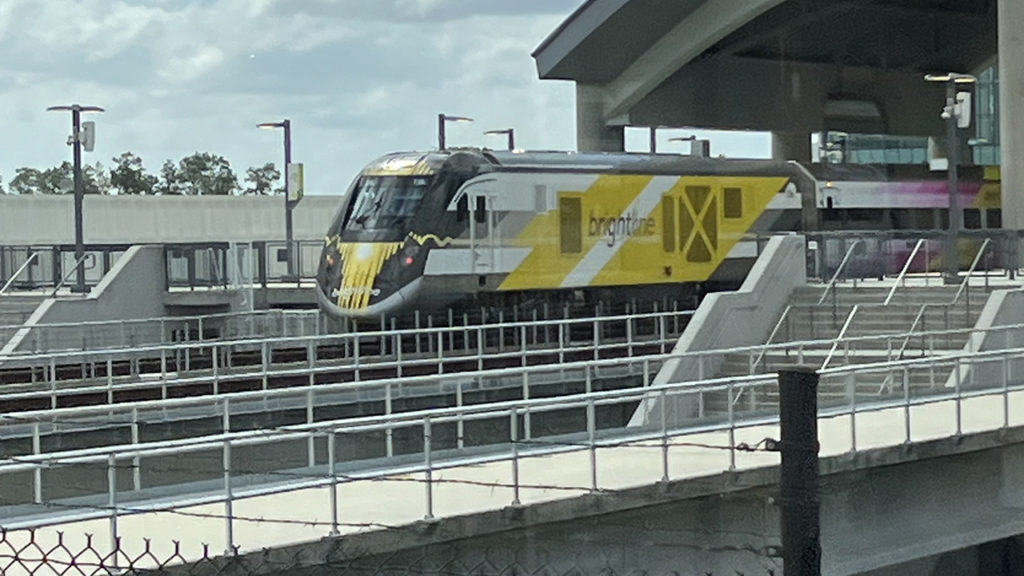
Brightline has released new passenger rail ridership data that includes its extension to Orlando, Fla., which opened Sept. 22.
According to the private-sector railroad’s investor report, ridership and revenue are up due to the extension, Next Miami reported Oct. 23.
Brightline launched the first phase of its South Florida operations in 2018, connecting Miami, Fort Lauderdale and West Palm Beach. Stations in Boca Raton and Aventura opened in 2022. Construction of its 170-mile, $6 billion phase two extension from West Palm Beach to Orlando began in 2019.
According to Next Miami, there were 17,578 Miami-to-Orlando riders at an average fare of $84 during the first nine days of operation to Orlando, and from Oct. 1-16, there were 40,219 riders at an average fare of $91. From Oct. 1-16, total ridership system-wide, including local trains between Miami and West Palm Beach, reached 104,322, the news outlet reported.
Brightline on Oct. 9 doubled the number of daily Miami-to-Orlando trains to 15 in each direction, according to Next Miami, which noted, “[f]uture bookings indicate continued acceleration of ridership demand in the coming months, Brightline said.”
CDOT
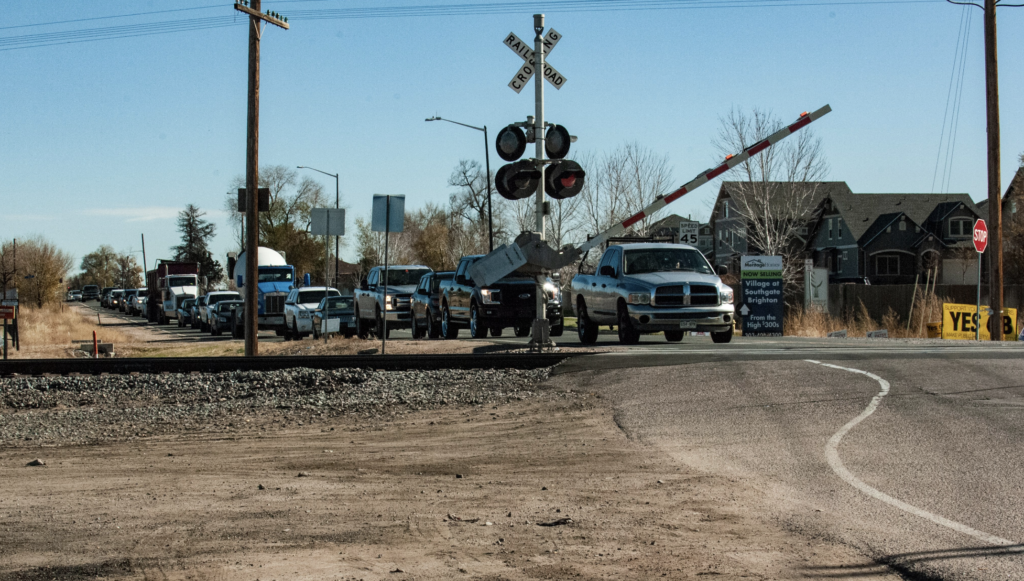
The state of Colorado is investing $5 million to study the possible re-establishment of passenger rail service from Denver through Steamboat Springs and on to Craig, CDOT reported Oct. 23. Local communities along the Yampa Valley have proposed restoring service along the 191-mile Union Pacific route—from Denver through Winter Park and Steamboat Springs, ending in Craig—which carried riders until 1968. The service could also coordinate with and complement buses, including CDOT’s Bustang system.
“When communities move from high carbon-producing industries to more sustainable practices, policymakers often aim for what is called a ‘just transition’—a plan that takes into account the economic and environmental concerns of the affected communities,” according to CDOT. “A just transition has been a top priority for Gov. Jared Polis’s administration, and maintaining freight and passenger rail connectivity is a priority for the Yampa Valley as it transitions from coal. The service development plan, for which the Colorado Transportation Commission has approved funding, will provide data and suggest service options for this corridor.”
The vision for northwest passenger rail, which CDOT said it has been working on for months, “became a real possibility because of recent developments that include dramatically decreased coal train traffic on UP rail lines, leading UP officials to be open to the possibility of hosting more passenger rail on its mountain lines.” UP lines already serve the California Zephyr and Winter Park ski trains.
“We have an unusual confluence of favorable conditions in place right now,” CDOT Executive Director Shoshana Lew said. “This is a rare opportunity for us to get significant funding for a project that we know is very doable.”
The next steps would include seeking input from communities along the route, counties, recreation industry partners and UP. Separately, CDOT said is working with the Front Range Passenger Rail District on planning for Front Range Passenger Rail, which could provide complementary service from Pueblo, through Denver, to Fort Collins and ultimately to Wyoming and New Mexico.
HART
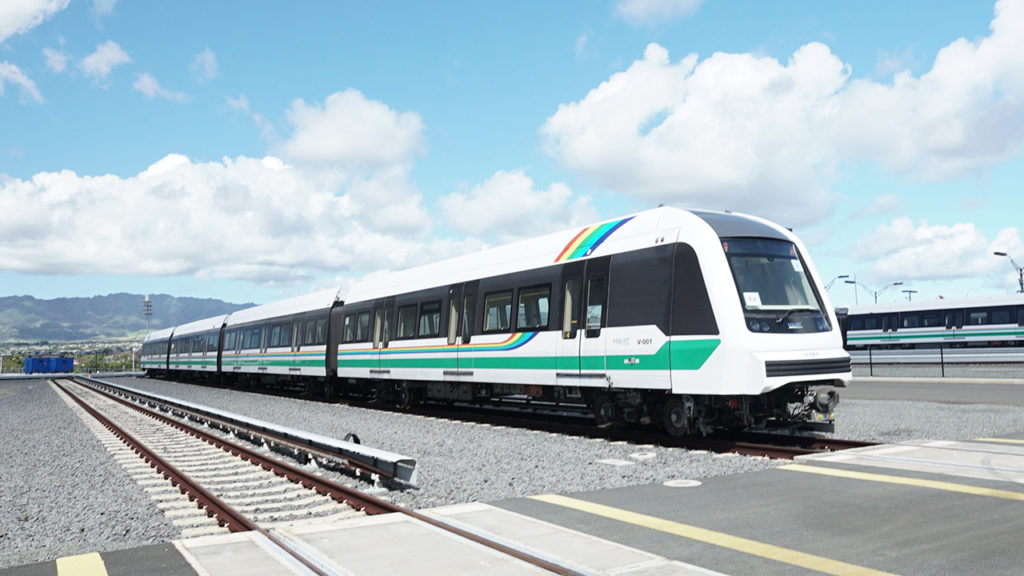
The FTA plans to finalize in late December a new Full Funding Grant Agreement for Honolulu’s autonomous (driverless) Skyline rail project, according to a Honolulu Civil Beat report on the HART Board meeting. This would “clear the way” for $125 million in funding.
The FTA has “withheld $744 million in federal funds since 2014 as the city struggled to resolve cost overruns and a long series of construction delays,” the newspaper said.
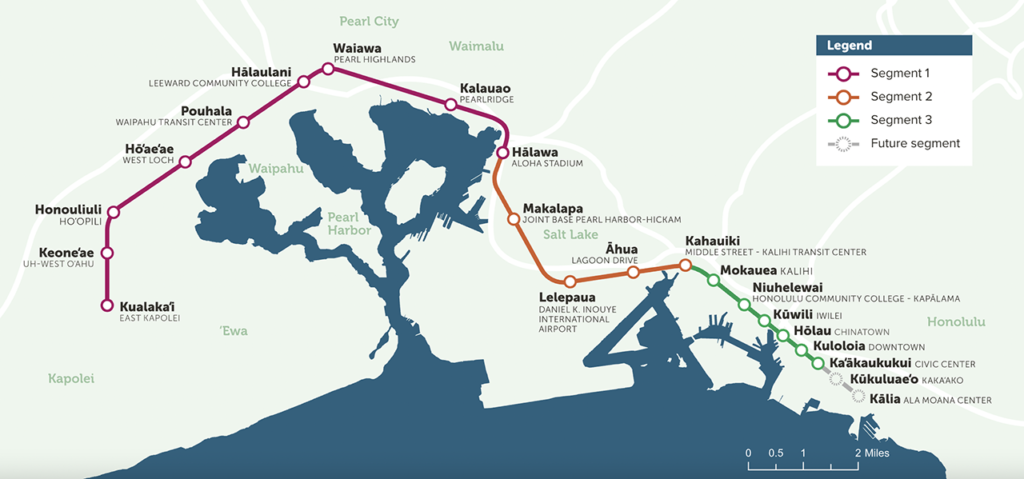
The city and FTA signed a $1.55 billion Full Funding Grant Agreement in 2020 to help fund rail line construction, but plans have changed since then. The 20-mile line’s construction from East Kapolei to Ala Moana Center had been slated to cost $5.1 billion and open in 2020, but the Honolulu Civil Beat said that “construction was delayed and costs escalated wildly since then, forcing the Legislature to step in twice to provide financial bailouts.” The city shorted the line by a mile and removed two stations to cut costs. Now the total project price tag is estimated at $9.93 billion including finance charges, the paper said.
Due to the line changes, additional environmental and FTA reviews were required as well as a new grant agreement, according to the Honolulu Civil Beat.
“HART had hoped to complete that grant agreement and begin drawing additional federal funding last December, but that process has taken a year longer than expected,” the newspaper reported.
Now, the “schedule calls for the HART board to give ‘conditional approval’ to the agreement by Nov. 30, and also indicates the Congress would be given official notification of the agreement the same day,” according to the Honolulu Civil Beat. “The document would then be submitted to the Honolulu City Council for its approval, and [Executive Director Lori] Kahikina said Honolulu City Council Chairman Tommy Waters is willing to waive any committee hearings to allow the full council to immediately consider and vote on the draft agreement on Dec. 6.
“The schedule presented by Kahikina calls for council to approve the document by Dec. 23, and the FTA to then execute the agreement by Dec. 29.”
The initial operating segment of Honolulu’s Skyline opened for revenue service June 30.
LACMTA
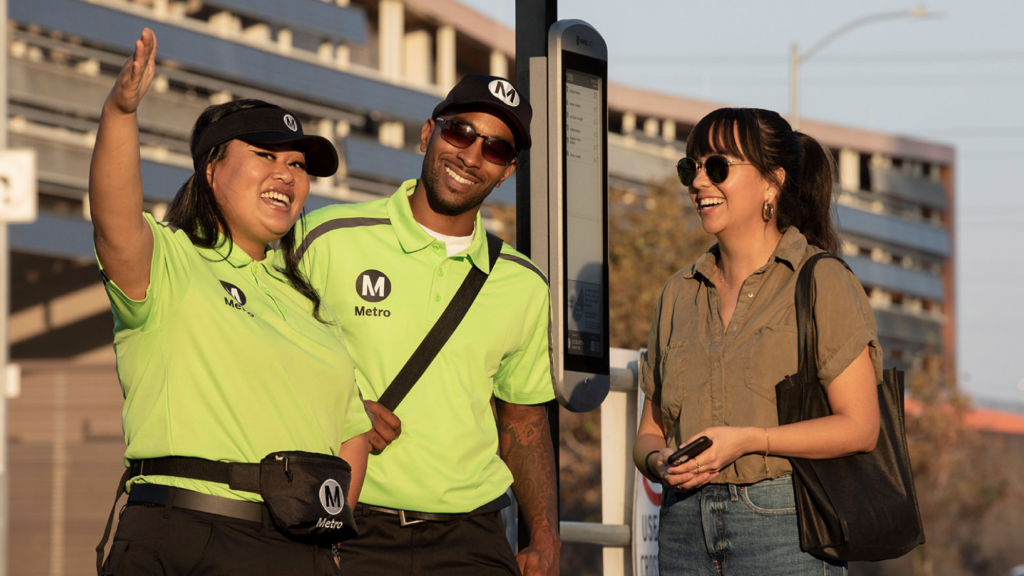
LACMTA’s public safety committee on Oct. 19 voted to make permanent the ambassador pilot program, according to a Los Angeles Times report. The LACMTA Board will decide on that proposal Oct. 26.
The Board in June 2022 signed off on the pilot and two staffing contracts. Since the September 2022 launch, approximately 350 ambassadors have “had more than 500,000 interactions with riders, according to a staff report,” the newspaper said. They serve as a welcoming and visible presence to support riders who need assistance with fare payment systems as well as transit system navigation; to connect riders with resources; and to report maintenance, cleanliness or safety issues, according to LACMTA. They are not security officers and do not replacing existing security staff or law enforcement.
“They’re the human touch,” said Holly Mitchell, Los Angeles County Supervisor and Chair of LACMTA’s Operations, Safety and Customer Experience Committee, during the Oct. 18 committee meeting, according to the Los Angeles Times. “They are also the ambassadors of our culture, of how we want to be perceived as a transit agency and how we want people to experience riding public transit. I am glad that the statistics are bearing the fruit that we anticipated and hoped for.”
The newspaper reported that ambassadors “used naloxone to reverse 52 opioid overdoses,” performed CPR 20 times, and intervened during a suicide attempt and other events during the past six months.
A recent rider survey found that 63% of respondents “felt ambassadors made their ride on a Metro [LACMTA] train feel safer; among low income communities, women and people of color, that rate was even higher,” according to the newpaper. “And 61% of those surveyed said they would want to see more ambassadors on Metro.”
According to the Los Angeles Times, if ambassadors were permanent, “they would receive better employee benefits, according to the staff report. Retention, administration, training and collaboration among other Metro departments would improve, according to the staff report … If approved by the full board, the ambassador program could stay under its $20 million annual budget, according to Metro staff.”
SRPRA
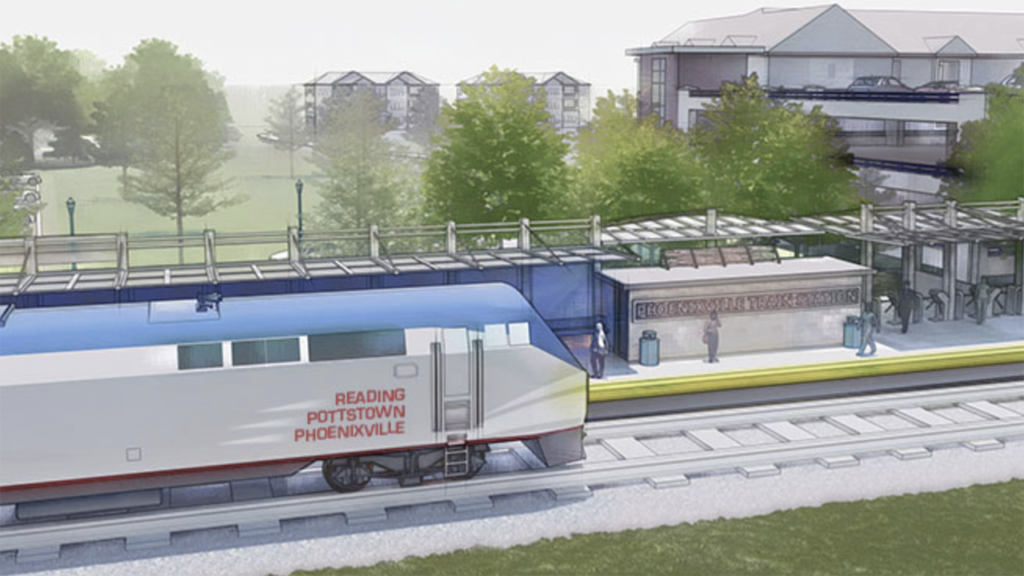
SRPRA has renewed for another year its contract with consultancy Transportation for America, WFMZ-TV 69 News reported Oct. 23. The authority, a joint venture of Pennsylvania’s Berks, Montgomery and Chester counties, is seeking passenger rail service restoration between Reading and Philadelphia.
Tom Frawley, who was hired last year as SRPRA’s interim Executive Director, said Transportation for America “was instrumental in developing the application to the Federal Railroad Administration’s Corridor [Identification] program,” according to the media outlet.
“We do anticipate, sometime in the coming months, new efforts where we are going to be able to take advantage of their [Transportation for America] capabilities in the form of grant writing applications,” Frawley said, according to WFMZ-TV 69 News. “We are waiting to hear on the corridor identification program, and hopefully that is acted on favorably. But in the wake of such a decision, there would be need for additional funds to continue beyond that point.”
An FRA decision is expected in November, according to SRPRA Chairman Christian Y. Leinbach, who noted that if SRPRA is not selected, “it will delay the project by years because we would have to wait for the next cycle of applications,” WFMZ-TV 69 News reported. “I believe if the FRA recognizes this corridor as a worthy project and moves it forward, we’re probably looking at five to eight years before passenger rail,” Leinbach said.



